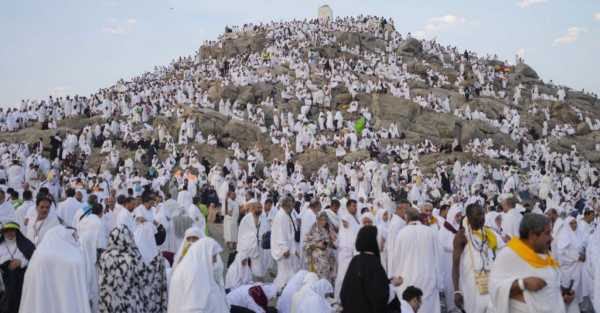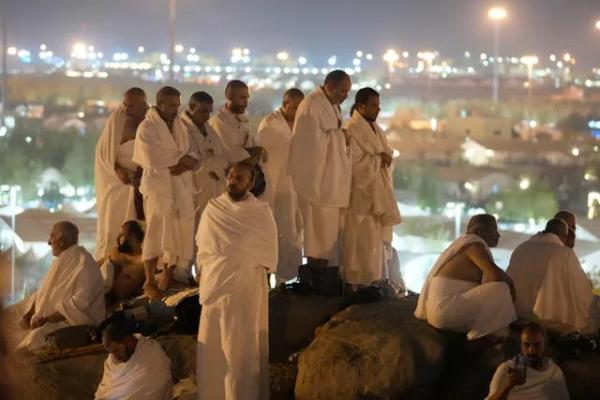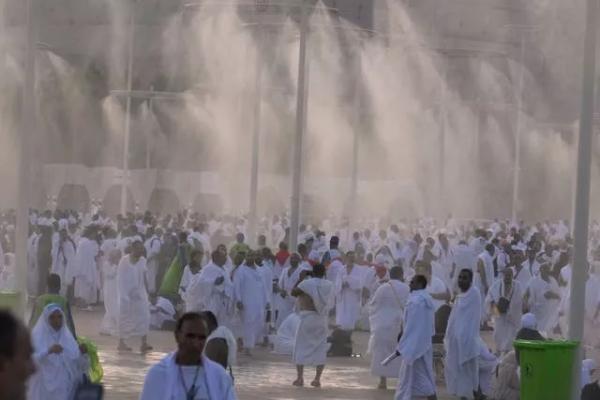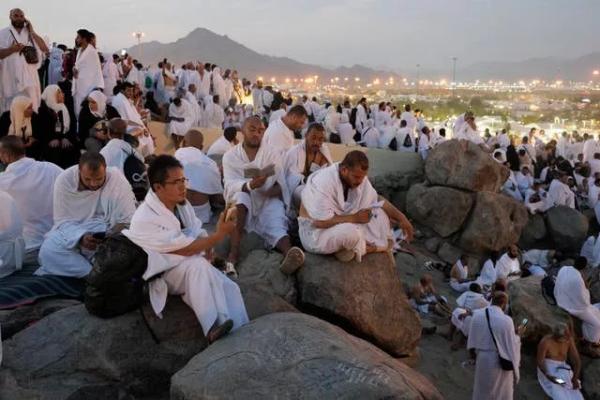
Following in the footsteps of prophets beneath a burning sun, Muslims from around the world congregated on Saturday at a sacred hill in Saudi Arabia for intense, daylong worship and reflection.
The ritual at Mount Arafat, known as the hill of mercy, is considered the peak of the Hajj pilgrimage.
It is often the most memorable for pilgrims, who stand shoulder to shoulder, feet to feet, asking God for mercy, blessings, prosperity and good health.
The mount is about 12 miles southeast of Mecca.

Thousands of pilgrims walked to the mount through the predawn darkness. On the slopes of the rocky hill and the surrounding area, many raised their hands in worship with tears streaming down their faces.
“For sure it is something great. It is the best day for Muslims during the year, and the best feeling that anyone can experience,” Hussein Mohammed, an Egyptian pilgrim, said as he stood on the rocky slopes at dawn.
“It is the best place for anyone hoping to be (here) on this day and at this moment.”
It is believed that Prophet Muhammad delivered his final speech, known as the Farewell Sermon, at the sacred mount 1,435 years ago. In the sermon, the prophet called for equality and unity among Muslims.
Ali Osman, a Spaniard, was overwhelmed as he stepped down the hill of mercy. He said he felt that he gained spiritual and physical strength at the sacred site.

“The place, thank God, (gives) very good energy,” he said. “I came here, thank God. It is my first time. I hope to come again in the future.”
Hajj is one of the largest religious gatherings on earth. The rituals officially began on Friday when pilgrims moved from Mecca’s Grand Mosque to Mina, a desert plain just outside the city.
Saudi authorities expect the number of pilgrims this year to exceed two million, approaching pre-coronavirus pandemic levels.
The pilgrimage is one of the Five Pillars of Islam. All Muslims are required to make the five-day Hajj at least once in their lives if they are physically and financially able to.
This year’s Hajj came against the backdrop of the raging war in the Gaza Strip between Israel and Hamas, which pushed the Middle East to the brink of a regional war between Israel and its allies on one side and Iran-backed militant groups on the other.

Palestinians in the coastal enclave of Gaza were not able to travel to Mecca for Hajj this year because of the closure of the Rafah crossing in May, when Israel extended its ground offensive to the strip’s southern city of Rafah on the border with Egypt.
Staving off potential protests or chants about the war during the Hajj, Saudi authorities said they will not tolerate politicising the pilgrimage.
Talal Al-Shalhoub, a spokesman for the interior ministry, said on Friday that the Saudi government “will not allow any attempt to turn the sacred sites (in Mecca) into an arena for mob chanting”.
Most of the pilgrims at Mount Arafat carried umbrellas against the heat, while others sat in the shadow of a few trees and buildings around the hill of mercy.
Cooling stations on the roads leading to the mount and in its surrounding areas sprayed pilgrims with water to help fight the heat, which had already climbed to 47 degrees at Mount Arafat, according to Saudi Arabia’s National Centre for Meteorology.
Sourse: breakingnews.ie






